Cheonji Garden (천지가든)
14.9Km 2024-04-07
303, Dangsan-ri, Muju-eup, Muju-gun, Région Jeonbuk
Located near the national highway, Cheonji Garden is a family operated restaurant.
With a folk and country style atmosphere, it mainly serves regional traditional dishes like ‘dotorimuk malim’ (dried acorn starch jelly) and ‘cheongtae jaban’ (a mixture of sea plants and other ingredients).
In fact, the grandmother of this family restaurant herself developed some of these dishes.
Cheonji Garden also has a spacious parking lot and great surroundings.
Banditburi Village (Firefly Village) (반딧불이 마을)
14.9Km 2024-04-07
Jamdu village, Yongpo-ri, Muju-eup, Muju-gun, Région Jeonbuk
+82-63-324-2440
En Muju, Jeollabuk-faire, il y a le Village Banditburi (반딧불이 마을), Firefly Village. Il existe trois types de lucioles qui vivent en Corée: unmunsanbanditburi, aebanditburi et neutbanditburi. Bien que aebanditburi et neutbanditburi émettent une lumière brillante, unmunsanbanditburi brille un variateur de lumière. Aebanditburi peut être vu en début d'été alors que neutbanditburi sort en début de l'automne. Fireflies est généralement la plus active entre les 8 et 9 heures, et les mâles et les femelles émettent des différents niveaux de lumière. Ceux avec une faible lueur, pas d'ailes et a trouvé sur les feuilles sont des femmes; celles qui émettent une lumière plus vive et battant furieusement dans le ciel nocturne sont les mâles.
Bien qu'il y ait une population relativement élevé de lucioles dans Muju-gun, le gouvernement local fait aussi un effort considérable pour protéger activement les insectes. Il a été écrit que sur 1,4 million d'espèces d'insectes, le Firefly est la seule qui émet de la lumière. Dans l'appréciation des lucioles Muju accueille le Festival Banditbul dans le début de l'été de chaque année.
Pavillon Hanpungru (무주한풍루)
15.2Km 2024-04-08
Région Jeonbuk, Muju-gun, Muju-eup, Hanpungru-ro 326-5
+82-1899-8687
Le pavillon Hanpungnu est réputé pour avoir été fréquenté par des poètes renommés en Corée. Le pavilion fut incendié par l'armée japonaise en 1592 (25ème année de règne du roi Seonjo) puis reconstruit en 1599. Sous la période de la colonisation japonaise, le pavillon a servi de base notamment pour la propagation de la culture bouddhiste. Après la libération de la Corée, le pavillon fut déplacé vers Yangsan-myeon, Yeongdong-gun et fut rénommé 'Geumhoru'. En 1971, les réisdents de Muju déplacèrent le pavilion vers son emplacement actuel à Dangsan-ri, Muju-gun, région Jeollabuk-do. Hanpungnu est aujourd'hui l'un des pavillons les plus célèbres en Corée dans la région Sud-ouest, à l'instar du pavillon 'Hanbyeokdang' à Jeonju et 'Gwanghallu' à Namwon. Le pavillon est aussi réputé pour bénéficier de la plus belle des architectures des trois pavillons cités.
Kirin motel [Korea Quality] / 기린모텔 [한국관광 품질인증]
15.7Km 2024-04-07
74, Dancheon-ro, Muju-gun, Région Jeonbuk
+82-10-4120-5562
Kirin Motel was redone entirely in 2018 to become the clean, comfortable accommodations it is today. With every room equipped with air-conditioning, guests can stay cool in summer and warm in winter. Being located at the center of the downtown of Muju, it offers easy access to many restaurants and facilities. Muju County Office and Namdaecheon Stream are a mere 300 meters away; Muju resort and gucheondong valley -- which are popular sites all year round -- are 25 minutes away by car. The venue of Muju Firefly Festival, Muju’s representative festival, is 600 meters away on foot. During the festival period, people can experience fireflies, the symbol of a clean region, and try diverse activities and food. Kirin Motel keeps the rates the same throughout the year be it peak season, off season, weekdays, or weekends, offering affordable options to guests whether during summer peak season or winter ski season with the best cost-effectiveness in the region.
Festival de la glace de la rivière Namdaecheon Muju (무주남대천 얼음축제)
15.8Km 2024-04-07
Ilwon Namdaecheon Muju-eup Muju-gun Région Jeonbuk
Ligne info tourisme Corée : +82-2-1330 Plus d'info : 063-320-5703
Ce festival se tient aux environs de la rivière Namdaecheon de Muju. Les visiteurs peuvent participer à plusieurs activités incluant pêche, patin à glace, luge et bien d’autres.
Marché des lucioles de Muju (무주반딧불시장(무주반딧불장터) (1, 6일))
15.8Km 2024-04-07
Région Jeonbuk, Muju-gun, Muju-eup, Jangteo-ro 2
+82-63-324-0692
Le marché des lucioles de Muju est un marché traditionnel ouvert 5 à 6 fois par mois, ouvert uniquement les jours se finissant par 1 ou 6. Il s'agit du marché traditionnel représentatif de la ville de Muju, possèdant une histoire de plus de 100 ans. Les vendeurs apportent leurs produits frais pour les vendre directement sur les stands et estrades dans la rue.
Wonhak Goga (Wonhak Old House) [Korea Quality] / 원학고가 [한국관광 품질인증]
16.3Km 2019-12-05
109-5, Hwangsan 1-gil, Wicheon-myeon, Geochang-gun, Gyeongsangnam-do
+82-10-5359-2224
Located in Geochang, Wonhak Goga (Wonhak Old house) is regarded as the most beautiful hanok, or traditional Korean house, in the village of Hwangsan. Designated as Folk Material No. 17 in recognition of its value as a historic material, it is the largest and best preserved noble house in Gyeongsangnam-do Province, and is currently managed by Park Jeong-ja, the wife of the eldest son of the head family. It was originally opened to the public for the annual Keochang International Festival of Theater (KIFT) as there was insufficient accommodation to lodge the thousands of visitors to the festival. Therefore, the county suggested that Park provide people with a hanok accommodation to promote the village’s traditions. Accepting the suggestion, Park renovated the house by expanding the sarangchae room installing a modern-style washroom, and providing clean high-quality bedding. The house itself consists of seven structures in total including the anchae, sarangchae, jungmunchae, gotganchae, a tall gate, and a rear gate. Both the sarangchae and anchae have a half-hipped roof. Notably, the sarangchae has a total area of 99m2 and features a large girder and a round foundation stone. This traditional hanok house also boasts high-quality, refined interior decoration. The Geochang area is well known for both the Suseungdae scenic point, whose splendid surroundings include pure crystalline water, rocks, and a pine grove, and the Keochang International Festival of Theatre (KIFT) which is held every summer. After passing the main gate of the Suseungdae scenic point, in Whicheon-myeon, Gaochang-gun, and continuing along the road, visitors will come to Hwangsan Village, where a 600-year-old-zelkova tree welcomes them. In addition, visitors can enjoy the mural paintings created as part of a public art project by Geochang County while walking along the 1.2km-long stonewall (designated as a Gyeongsangnam-do Folk Material). The village of Hwangsan consists of two districts, one of which contains about fifty 100- to 200-year-old hanok houses, as well as Wonhak Goga, which has stood at the center of the village for about 500 years. Wonhak Goga, or the Old House of the Shin Clan, was originally built by Shin Gwon (pen-name Yosu), but was then demolished and rebuilt by Shin Jong-sam, a 10th-generation descendant of the family, in 1927. It is also a renowned family house and has remained a symbol of the family’s wealth and authority for many generations. Park’s father-in-law, Shin Do-seong, was a member of the National Assembly and worked as the Ministry of Unification, while her husband, Shin Wi-beom, worked as a school juristic person, gaining people’s confidence and trust. Furthermore, the house stands in an auspicious location in terms of geomantic principles, according to which the family’s descendants will have a peaceful and prosperous life for the next 400 years. Park hopes that guests will enjoy their stay amid the serene atmosphere of this old hanok house.
Parc Suseungdae à Geochang (거창 수승대)
16.4Km 2020-08-28
Wicheon-myeon, Geochang-gun, Gyeongsangnam-do
+82-55-943-5383
Geochang-gun est situé dans les montagnes intérieures de la partie nord-ouest de la province de Gyeongnam et partage ses frontières avec les provinces de Gyeongbuk et Jeonbuk. Suseungdae est situé dans le parc national de Deogyusan, qui est situé dans le centre des trois provinces voisines. Suseungdae est l’une des plus anciennes attractions touristiques de Geochang. Suseungdae est originalement nommé “Susongdae” puisque que c’est l’endroit où Baekje à dépêché ses envoyés vers Shilla durant l’ère des trois royaumes. Plus tard, durant la dynastie Joseon , le nom a changé et est devenu Suseungdae. Des halls de lecture de style anciens et des pavillons offrant un beau point de vue aux touristes. L’attraction est également totalement équipée avec une piscine extérieure, un site de camping, et beaucoup d’autres aménagements. Les soirs d’août, c’est également le lieu d’accueil du festival international de théâtre.
Jungon Head House
16.8Km 2021-04-09
13, Gangdong 1-gil, Wicheon-myeon, Geochang-gun, Gyeongsangnam-do
+82-10-2518-4727
Located in Geochang County in Gyeongsangnam-do Province, the Head House of Mr. Jeong On shows a peculiar style of ancient Korean architecture. Since the house is located in a basin surrounded by high mountains, it was built in overlapping style as the typical architectural style in the northern region in order to endure the cold. In addition, the "eyebrow" roof was added as protection from the frequent rain. The house is mainly visited by families on weekends and research organizations on weekdays. Visitors can enjoy various healing and cultural activities in the trekking course of Mt. Geumwonsan and the Suseungdae Amusement Park, which are 1km away. The Anchae is used by the owner family, and the Sarangchae, Jungmunchae, and Daemunchae are used as guest rooms. Groups can rent the entire Sarangchae building.
Geumgang Speed Muju Rafting (무주래프팅)
18.4Km 2024-04-24
1191-1 Yongpo-ri, Muju-eup, Muju-gun, région Jeonbuk
+82-63-322-7745
La station de vacances Geumgang Speed Muju Rafting se situe au-dessus de la rivière Geumgang et offre des programmes de rafting, de survie, d’escalade et de pêche. Le complexe possède une surface de 9 917 m² et peut loger jusqu’à 200 vacanciers.

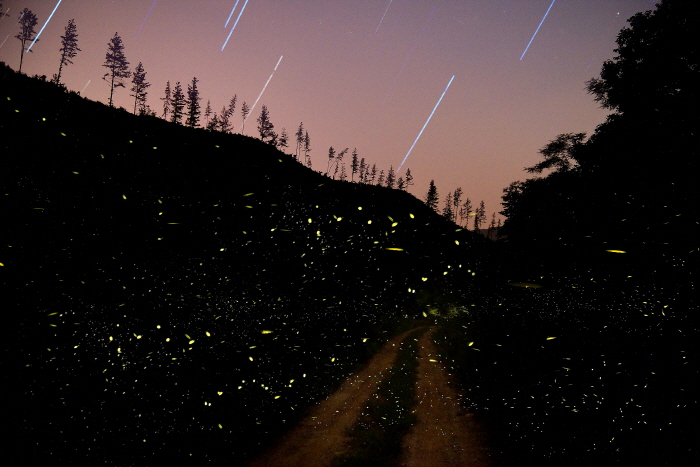
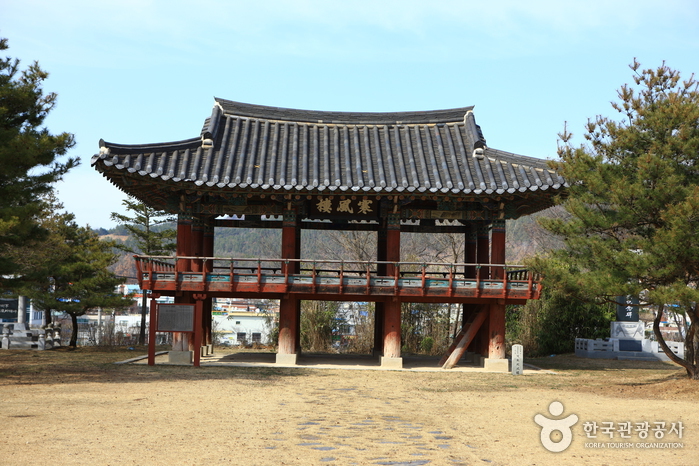
![Kirin motel [Korea Quality] / 기린모텔 [한국관광 품질인증]](http://tong.visitkorea.or.kr/cms/resource/37/2593237_image2_1.jpg)
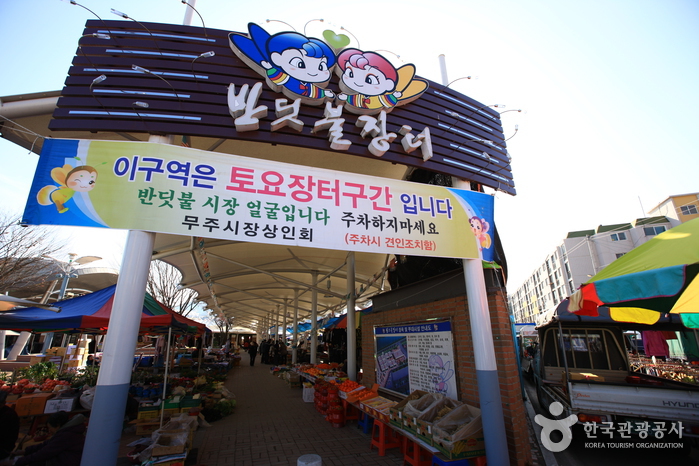
![Wonhak Goga (Wonhak Old House) [Korea Quality] / 원학고가 [한국관광 품질인증]](http://tong.visitkorea.or.kr/cms/resource/13/2572413_image2_1.jpg)
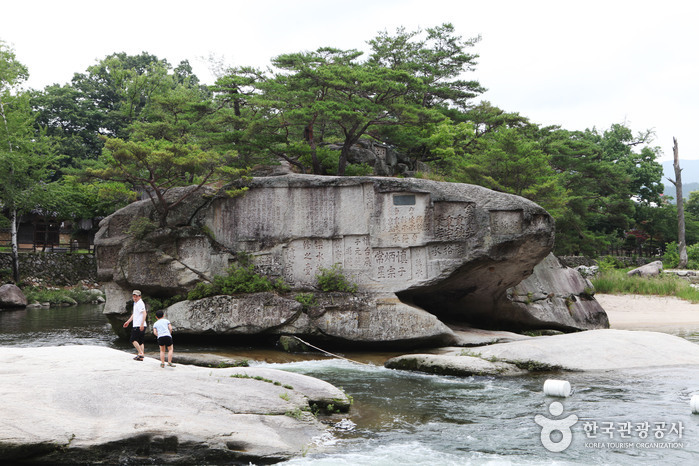
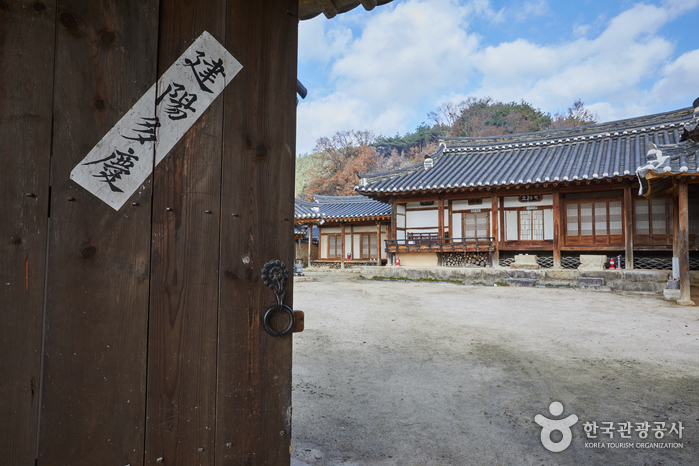
 Français
Français
 한국어
한국어 English
English 日本語
日本語 中文(简体)
中文(简体) Deutsch
Deutsch Español
Español Русский
Русский